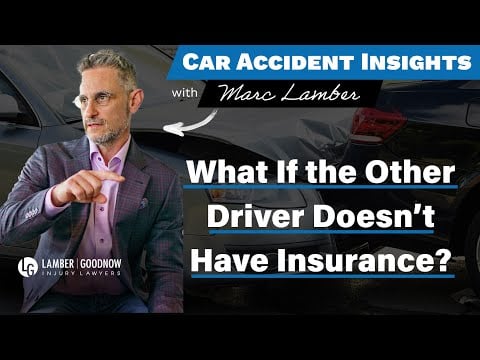Insufficient Insurance of the At-Fault Driver: How to Cover Your Damages?
If you find yourself in a car accident due to the negligence of another driver, you may rely on their insurance policy to cover the expenses related to damages or injuries. However, the extent of the accident may result in significant costs for you. In such cases, the insurance of the at-fault driver can assist in covering a considerable portion of these expenses. However, if the driver responsible for the accident has inadequate or no insurance, you may wonder about the available options. As an experienced injury lawyer in Phoenix, I can help you with the choices you have when you collide with an uninsured or underinsured driver.
Traditional Vs No Fault States
Auto insurance laws in U.S. fall into two categories: negligence state and no fault states. Many states are in the negligence category. Basically, in negligence states, recovery for vehicle accidents is determined by looking at who was at fault for the accident. These states have less strict insurance requirements, therefore, the issue of an under insured or uninsured motorist is common, since the victim of an accident recovers damages from the at-fault party’s insurance policy. When the at-fault party is underinsured or has no insurance, recovery is very difficult.
If you have sustained catastrophic injuries and are in need of ongoing care, an underinsured driver’s policy may not be able to help you. The other scenario is when the underinsured motorist’s policy is not sufficient to cover your vehicle repairs. In such cases, the easiest solution is to have underinsured or uninsured coverage from your insurance company. This coverage is offered at an extra fee and caters for accidents involving uninsured or underinsured motorists. With this type of coverage, you are first supposed to collect all you are able to from the underinsured or uninsured motorist, then make a claim with your insurance provider for the remaining cost.
In no-fault states, every car owner should have their own vehicle insurance. One cannot obtain vehicle registration without insurance. The minimum insurance coverage required varies depending on which state you are in. In no fault states, if you are a victim of an accident, you are supposed to collect from your own insurance policy, no matter who is at fault for the accident. Your insurance company will cover your repairs and medical expenses. However, there are instances when you can recover from the faulty driver’s insurance policy.

Car Accident Negligence Law Suits
Many states don’t require drivers to have underinsured or uninsured coverage. Therefore, if you are involved in a crash with a driver who has deficient insurance, you cannot collect from your insurance company unless you have underinsured coverage. At this point, your only option is to file a negligence claim.
When filing a negligence claim, you are required to prove that the other driver caused the accident. In some cases, proving fault is easy especially if the other driver has been issued with a ticket in the past, or charged with reckless driving. In other cases, proving fault is difficult. If you are partially to blame for an accident, your recovery is significantly reduced. Insurance adjusters, juries, and judges can all assign percent of fault to the parties involved in an accident.
In some states, if your liability is below 50 percent, there is a chance you can recover the whole amount handed in any judgment. In other states, you can only recover damages based on the other driver’s percentage of liability. Therefore, if you are found to be 25 percent liable, and the other driver is 75 percent liable, any award you receive will be reduced by 25 percent.
The sad truth is that, in most cases, drivers who have no insurance or are underinsured are uncollectable. This means that even if you are successful in your claim, if the defendant has no valuable assets or no money, you are left with a judgment that is unenforceable.
When involved in a car accident with a driver who is not insured or is underinsured, the first thing you ought to determine is whether you are in a negligence state or a no-fault state. If you are in a no-fault state, you should claim compensation from your insurer. If you are in a negligence state, your claim lies with the at-fault driver’s insurer. In such cases, you can either collect from your own insurer if you have an underinsured policy, or sue the at-fault driver.

What If the Other Driver Doesn’t Have Insurance?
Nationwide, 12.6 percent of drivers are uninsured. That means one in eight drivers sharing the road with you does not have auto insurance. Many more people are underinsured. Though almost all states require motorists to carry liability insurance, some drivers do not obey those laws, some carry very limited insurance, and some are visiting from places with different insurance requirements.
If you get into a serious collision with an uninsured driver, you could incur substantial costs.
Even if you have liability coverage at $100,000 per person and $300,000 per accident, you’re not covered if an uninsured driver rear-ends you at 45 mph. You may be in compliance with mandatory auto insurance laws, but your excess compliance isn’t going to help you under those circumstances. If you suffer serious injuries in that crash, your medical bills and lost earnings are likely to exceed an underinsured driver’s policy limits.
This is why insurance agents, as well as the Arizona Department of Insurance, advise purchasing uninsured motorist coverage.
What is uninsured motorist insurance?
Uninsured motorist insurance is another type of coverage on top of a standard automobile liability insurance policy. You pay a separate premium for it. The cost varies widely, but a ballpark figure is approximately 5 percent of your annual auto insurance premium. So if you currently pay $800 a year for auto insurance, uninsured/underinsured motorist insurance may add $40 to your annual fees. The cost can depend on many variables, including your driving history.
Uninsured motorist insurance is optional in most states but required by law in 20 states, plus the District of Columbia: Connecticut, Illinois, Kansas, Maine, Maryland, Massachusetts, Minnesota, Missouri, Nebraska, New Hampshire, New Jersey, New York, North Carolina, North Dakota, Oregon, Rhode Island, South Carolina, South Dakota, Vermont, Virginia, West Virginia and Wisconsin. (Note that state laws can change, so check to be sure of your state’s latest requirements.)
What does uninsured motorist insurance cover?
If you’re involved in an accident through the fault of an uninsured driver, your uninsured motorist insurance will reimburse you for injuries sustained to you and your passengers. It often includes underinsured motorist insurance, which covers you and your passengers for injuries sustained in a collision involving a driver who has insufficient insurance to cover those damages. Depending on the nature and extent of your injuries, those damages might include:
- Past and future medical bills
- Past and future lost earnings
- Any permanent disfigurement
- Any permanent disability
- Pain and suffering
- Loss of a normal life
Your uninsured motorist coverage doesn’t just cover you. It generally covers you and any family members who are residents of your household as drivers, passengers, bicyclists and even pedestrians. It may also cover a designated driver. You’re probably even covered in an accident involving an at-fault hit-and-run driver.
However, your uninsured motorist insurance won’t cover property damage to your vehicle. For that, you would have to buy uninsured motorist property damage insurance, though this may not cover damaged property other than your car. This type of insurance may also not cover hit-and-run accidents and is not available in all states. You’re probably better off with collision coverage.
Legal challenges with uninsured motorist cases
Uninsured and underinsured motorist claims involve complex insurance and legal language. Don’t try to pursue an uninsured or underinsured motorist claim by yourself. In a typical uninsured motorist case, you’re not suing the at-fault driver, since it’s likely they don’t have insurance because they don’t have much money. Instead, you’re usually making a claim against your own insurance company. Insurance companies’ objective is to pay you as little as possible; they may even deny your claim and pay you nothing. Further complicating the issue, more than one person or entity might be liable for your injuries.
Lamber-Goodnow uses every legal strategy possible to help you find compensation when you’ve been injured by an uninsured driver. You can contact us at 602-910-2566 to schedule a free consultation and case evaluation on your uninsured motorist case. We only get paid when and if you get paid.
Note that car insurance policies often require you to notify them of a potential claim shortly after the incident. Don’t delay in consulting with an attorney and contacting your insurance company.
Remember that uninsured motorist insurance typically also includes underinsured motorist insurance. If the policy limits of the person who caused your accident weren’t sufficient to cover your damages, additional compensation might be available for you. And don’t worry about your premiums going up. It’s against the law for your insurer to raise your rates if your accident with the uninsured driver wasn’t your fault.
When pursuing an uninsured motorist case, you’ll need to take the same steps you would if you got into an accident with an insured driver: take photographs, get witness accounts, call the police and file a report. Review our strategies for what to do if you’ve been in an accident.
Frequently Asked Questions (FAQs)
Q: What options do I have if I’m in an accident with an underinsured or uninsured driver?
A: If you are in a negligence state, you can either collect from your own insurer if you have an underinsured policy or sue the at-fault driver. In a no-fault state, you should claim compensation from your insurer regardless of who was at fault.
Q: How do negligence states differ from no-fault states regarding car accidents?
A: In negligence states, recovery for vehicle accidents is based on determining who was at fault. In no-fault states, every car owner should have their own vehicle insurance, and they collect from their own policy regardless of fault.
Q: What is uninsured motorist insurance and why is it important?
A: Uninsured motorist insurance is an additional coverage that reimburses you for injuries sustained in an accident caused by an uninsured driver. It’s crucial since it helps cover medical bills, lost earnings, pain and suffering, and other damages if the at-fault driver lacks adequate insurance.
Q: How can uninsured motorist insurance protect me and my family?
Uninsured motorist coverage not only covers you but also any family members residing in your household, whether they are drivers, passengers, bicyclists, or even pedestrians. It provides protection against damages caused by uninsured or underinsured drivers.
Q: Do I need a separate policy for property damage caused by an uninsured driver?
A: Yes, for property damage to your vehicle, you would need to purchase uninsured motorist property damage insurance. This type of insurance might not cover other damaged property or certain scenarios like hit-and-run accidents.
Q: How do I pursue a claim if I’ve been hit by an uninsured or underinsured driver?
A: If pursuing an uninsured motorist claim, you’re typically making a claim against your own insurance company. It’s advisable to consult with a legal expert since these cases can involve complex insurance and legal language. Always ensure you notify your insurance company of a potential claim shortly after the incident.



